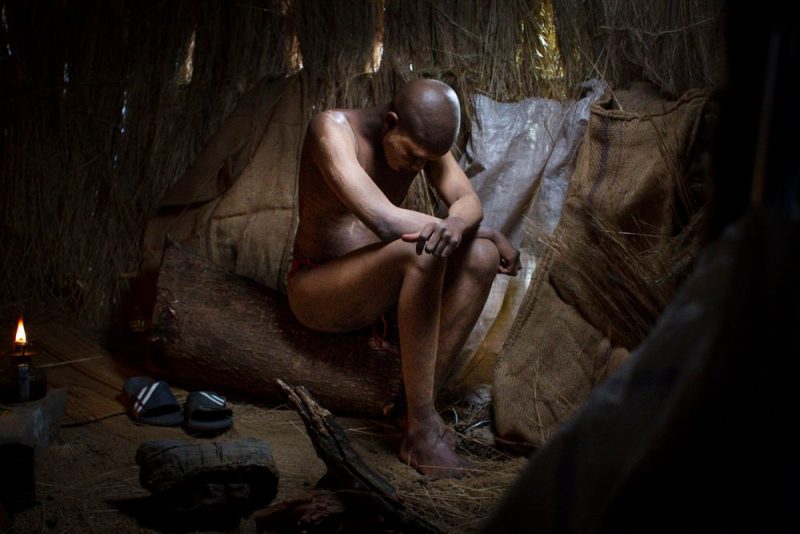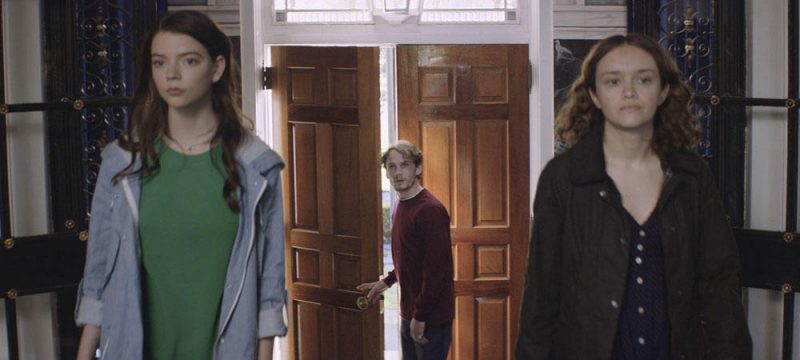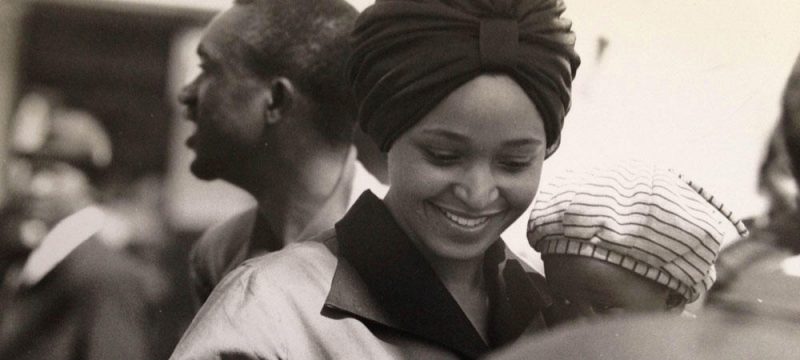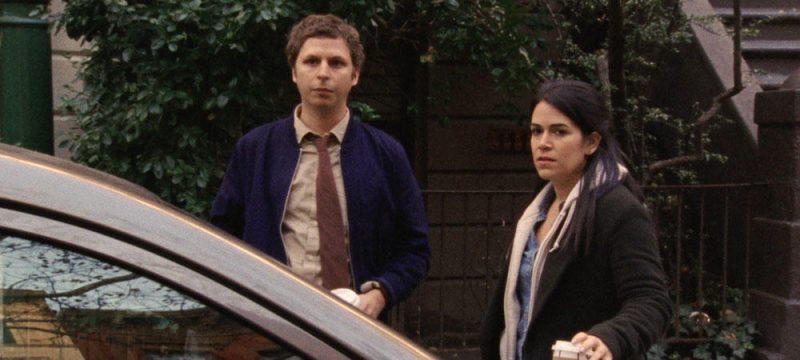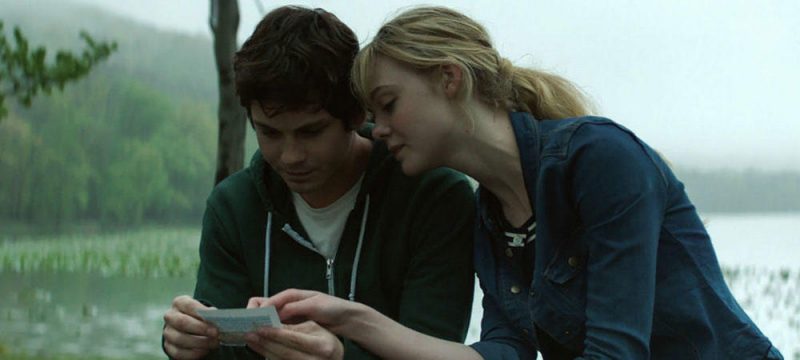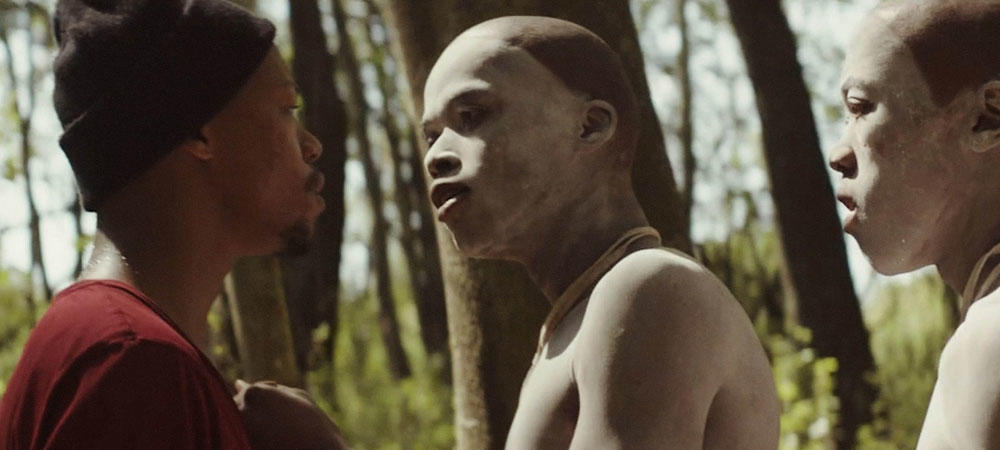
The 2017 Sundance Film Festival is nearly over, and as we’re basking in the glow of fresh air and theater lighting, it’s exciting knowing that some amazing treasures found here will be resonating with today’s world. Some of our favorites picks of today are John Trengrove’s fascinating The Wound which really gives an eye-opening look at a South African secretive rite of passage for boys entering into manhood.
Thoroughbred is another very interesting one that many people can relate to about two friends trying to rekindle their connection. It reminded me of when you home five years or more after high school and run into some of those same people who never left your town. You realize how much you’ve changed in that time and trying to connect again is nearly impossible, especially for those that haven’t changed at all in that same timeframe.
‘THE WOUND’ PRESENTS A QUEER PERSPECTIVE ON A SOUTH AFRICAN RITUAL OF MANHOOD
For his enthralling debut feature, South African filmmaker John Trengove lifts the veil on the secretive rite of passage from boyhood to manhood in a remote area of South Africa. The Wound follows Xolani (Nakhane Touré), a forlorn factory worker, as he travels to an obscure mountain camp where teen boys go through the traditional Xhola initiation. Xolani has been assigned to mentor a friend’s son, Kwanda (Niza Jay Ncoyini), who notices the attraction between Xolani and another caregiver, Vija (Bongile Mantsai), who is not only secretive about his sexuality but also prone to bursts of explosive behavior.
Following the screening, Trengove, who is white and self-identifies as queer, said he made the movie because there’s a complete lack of queer imagery in the African film canon. “It came out of a sense of urgency,” he told the audience. “For myself as an outsider, it’s something I could speak about more freely than someone who is inside the culture. I’m speaking about same-sex desire. As a queer filmmaker I was able to introduce the subject into this very intricate world and practice.”
Describing the project as the result of profound collaborations, Trengove revealed that to achieve authenticity he spoke with a South African novelist who had been through the initiation himself, and the two men began to create the story together. The three principal actors in the film each in his own way made a formidable contribution to the film, not just in terms of what an actor does but in making the characters their own and contributing something quintessential and unique to their own experiences.
Trengove noted that the film’s subject matter is very controversial in South Africa, despite being the subject of various documentaries and news articles and even being mentioned by Nelson Mandela in his autobiography. “I think our film comes at a moment when there’s a growing conversation about a sensitive subject,” he stated. “The ritual has come under fire for reasons of relevance and safety. I think equally it’s still regarded as a meaningful process that boys go through that shows them their place in the world of men.”
The director praised the courage of his three lead actors for taking on the roles. “I was very fortunate to have the bravery of these three actors to collaborate on what you saw tonight,” he said. “They did it for their own very personal reasons, primarily out of a conviction that these are stories we need to begin to speak out.”
THOROUGHBRED: OLIVIA COOKE AND ANYA TAYLOR-JOY CONSPIRE TO MURDER
With his debut film, Thoroughbred, Cory Finley finessed his way through two major challenges that could confound another first-time filmmaker. The first, as he told the audience during a post-screening discussion on Thursday at the Yarrow Theatre, was a transition from theater to moviemaking. And the second was pulling off a nuanced tone that at once straddles comedy, drama, and thriller.
The film stars Sundance Film Festival veterans Olivia Cooke (Me and Earl and the Dying Girl) and Anya Taylor-Joy (The Witch) as Amanda and Lily, two old school friends who uneasily try to rekindle some kind of connection. Though Amanda is emotionally blocked, incapable of showing or perhaps even having feelings, chilly Lily slowly reveals herself to be in greater crisis, as she bristles against a stepfather whose strictness is driving her to entertain wicked thoughts.
Finley talked about how Thoroughbred started out as a play but became a film. “When it was a play it really was a kind of philosophical, moral discussion between these two characters on one couch. It started with asking questions about myself, and attacking some of my own fears and anxieties about my own mind and moral compass, through writing,” he said. “As I started getting towards the later drafts of the play, I realized that there was something about it that was very film noir. And even though it was contained in one household, I started becoming aware of all the things I could do cinematically.”
Producer Alex Saks talked about her first conversation with Finley, after coming across what was still a play. “Within five minutes I knew that even if he didn’t know it yet, he was going to direct the movie — and that he was a filmmaker,” she said. Finley described trying to make up for his inexperience by reading books, watching movies, and visiting film sets in the months before his first shoot. “I tried to cram in as much preparation as possible so that I could communicate effectively with the whole crew,” he said. “But I was certainly learning a lot on the job.”
And as for that fine-tuned tone, Finley said it was something they consciously refined from rehearsals through the shoot and then in editing. “We talked about [the tone] as being a narrow tightrope,” he said. “I was lucky to get a couple of days of rehearsal before we started, with the two leads, and we came to a clear understanding of the tone that we were all aiming for. And then in the editing process we had another chance to really look carefully at these scenes and play very specifically with timing and pauses and different takes. There’s a fun balance to be had in trying to provoke an audience to laugh and also to be slightly afraid. The two emotions, if you can balance them, go well together.”
Though he said he still plans on producing more theater, Finley’s first foray into filmmaking has him hooked. “I’ve fallen in love with the tools to which a director has access,” he said. “So I’m definitely looking forward to playing around in this world more.”
WINNIE: A DOC ABOUT WOMEN, POLITICS, AND MISOGYNY
With WINNIE, the new documentary about Winnie Madikizela-Mandela, Pascale Lamche offers an illuminating portrait of the complex story of the woman, who is often cast in the shadow of legendary human rights activist Nelson Mandela, her husband of 38 years, even though she fought on the frontlines to end apartheid during the 27 years he was imprisoned.
While Winnie’s story has been capably told by other filmmakers and documentarians and through countless books and articles, Lamche manages to create a fresh, thorough, and likely definitive study by using revealing new interviews, as well as a veritable treasure trove of newly uncovered archival materials.
“I interviewed Nelson twice for previous films, and each time it was a great honor to meet him and speak to him and spend time with him, but I was always very intrigued by Winnie,” Lamche told the audience at the post-screening Q&A. The director noted that, while Winnie is mostly venerated in her home of Soweto, South Africa, Lamche learned that her subject was also widely demonized in many European capitals for her crusade against racism, and a smear campaign was launched against her. “That seemed like a space to explore,” the director offered.
Through a meeting and conversation with Mandela’s daughter Zindzi, who also speaks on camera in the doc, Lamche was eventually introduced to Winnie. She ended up interviewing her subject four times over a period of two years, including once just after the death of her former husband, when she was still dressed in her black mourning clothes.
“On each occasion, I tried to pull back another layer of the story,” Lamche shared. “Each time I met her I uncovered more in the story because I’d been digging away and making progress with the people who’d been her enemies. I never went to her with specifics and said I interviewed this guy who waged this warfare campaign against you. As our relationship progressed over time, it deepened. I hope that’s apparent in the film.”
As her film skillfully explores the intersection of women, politics, and misogyny, it’s not a challenge for audiences to draw a strong parallel between Mandela’s story and the current political climate in the U.S.
PERSON TO PERSON: A SUBTLE, OPTIMISTIC COLLAGE OF EVERYDAY NEW YORKERS
“I made [this movie] with a lot of friends. And it’s about tenderness, it’s about friendship, it’s about wanting to have a friend, and what it’s like to be a friend, and what it’s like to lose a friend,” explained director Dustin Guy Defa as he introduced his latest project, Person to Person. Defa makes his return to the Festival after his 2014 short film of the same name.
The feature, shot in retro 16mm, follows various characters throughout one day in New York City, including a moody teenager putting up with her best friend’s antics, an endearingly simple man trying to buy a rare vinyl record (Bene Coopersmith, who also starred in the short film version of the story), a depressed guy attempting to reconcile with his girlfriend after hurting her, and an anxiety-ridden rookie reporter who feels completely out of place her first day on the job. But unlike other films that depict a large ensemble of characters with different story lines, this one doesn’t aim to connect them in any obvious way other than the fact that they’re in the same city.
Defa said that when he first thought of the idea for this project, “I got very excited … to make such a variety of people and to not necessarily connect them. So I got very excited [about how to] pull it off. I developed all the characters separately. … But once I started actually working on the outline and the writing, I was interconnecting it in other ways that aren’t visible. … Even though they all had such different things and different tones and things like that, I was still connecting them thematically in many ways. And so I needed the flow to really work even though all these people had such different things going on.”
When asked which characters he relates to the most, Defa revealed, “They’re all me in many ways. I’ve done stupid things in my life, I’ve treated people weirdly, and then friendship is very important to me [like it is with Bene]. And Wendy the teenager is definitely me as a teenager in many ways. … But I don’t have a favorite.”
The characters don’t necessarily go through anything captivatingly dramatic, but Defa’s purpose wasn’t to have audiences on the edge of their seats. He explained that, amid many abrasive, visceral depictions that often appear on the screen, he simply wanted to create “a nice place to go for an hour and a half” — to which the audience applauded in agreement.
SIDNEY HALL: A PRECOCIOUS WRITING TALENT DRIFTS INTO OBSCURITY
Sidney Hall, which premiered on Wednesday night at the Eccles Theatre, spans 12 years in the life of the eponymous character, from the moment that the precocious high school kid becomes a celebrated author to his apex of fame and emotional nadir, and to his time disowning all that he’d become and drifting into obscurity. Remarkably, those 12 years mirror the 12 years it took writer-director Shawn Christensen and writer Jason Dolan to see the project to completion.
“Shawn was in a great band called stellastarr*, and when he was on tour I sent him the first couple of pages of the script, and we went from there. It was the summer of 2004,” Dolan said during the post-screening Q&A. “We wanted to tell a story about perspective — what it’s like to think about how you were at 18, 24, and 30. We chose those ages because those were the ages we were at when we were writing the script.”
The breadth of time covered presented challenges for both the crew and the performers, including Logan Lerman as Sidney and Elle Fanning as his neighbor and later wife, Melody. “The transitions between ages — sometimes we had only hours in which to do it,” Lerman recalled.
“We shot 10 days of [age] 18 first, then we shot the [age] 24 segment, and then we shot the 30, with the intention of having a weekend in between each era,” Christensen said. “But actually for Elle and for Logan I had to break the news to them that we were going to have to switch from 18 to 24 over the lunch break.”
Though it seems like such a quick shift in age would be challenging, Fanning explained, “You can’t really think about playing older or playing a certain age, because what does that really mean?” She continued, “I was more interested in where Melody was in her life.”
The script doesn’t take a straightforward chronological approach to those eras, and instead interweaves them throughout, such that it’s only at the end that you know how the characters resolved each of those dramatic moments. Dolan explained that he hoped audiences would connect to that structure because “your life is sometimes a mess in your own mind.” He said, “What we wanted was to give people a puzzle to put together, to reflect on this character and also themselves.”


